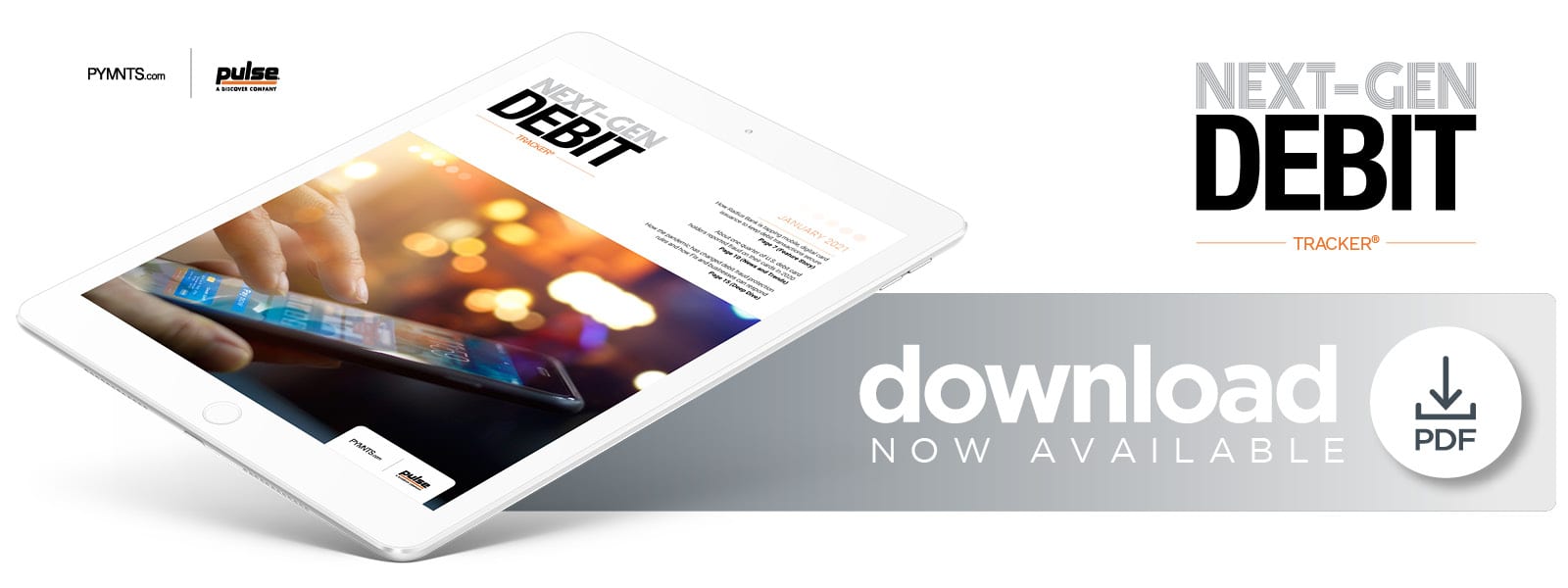How Radius Bank Is Tapping Mobile, Digital Card Issuance To Keep Debit Transactions Secure

Consumers are increasingly turning to debit to manage their spend, and fraudsters are wise to the move. In the latest Next-Gen Debit Tracker, Chris Tremont, executive vice president of virtual banking at Radius Bank, discusses how issuing virtual debit cards and using mobile-enabled tools like spending limits and fraud alerts can help financial institutions (FIs) beat back debit fraud.
The ongoing pandemic has pushed more consumers online to carry out their shopping and banking, with fraudsters following suit. Bad actors have moved to take advantage of the rush to digital payments — particularly those made with debit cards — leaving banks and financial institutions (FIs) racing to keep them off their platforms.
FIs must be prepared to support the pandemic-driven shift in consumers’ payment and spending behaviors while also keeping up with new security needs, Chris Tremont, executive vice president of virtual banking for Radius Bank, said in a recent PYMNTS interview.
“As more people move to digital, so do some of these [fraudsters],” he said. “We have seen higher levels of fraud or suspicious activity, [and] we have definitely built up our fraud prevention team. … It is something that we always keep an eye on — we are talking about it almost every day. Fraudsters are out there moving pretty quick, and so banks have to be out there moving quick with them.”
This is particularly critical for debit transactions, as consumers are increasingly turning to these cards over other payment methods during the economic downturn.
More Debit Payments, More Debit Fraud
The pandemic has raised the stakes for the robust protection of debit transactions due to the simple fact that more consumers are spending with debit than with other forms of plastic, Tremont explained. Radius saw debit payments jump 35 percent from February 2020 to December 2020, he said, with the average transaction size also rising 25 percent during the same period.
“If you look at what is going on in the economy at the macro level, I think this flight to safety in general is taking place,” he explained. “People [are] being more conscious of their spend and, in some cases, [are] maybe even spending less, but you still have to spend money in certain areas. So maybe there is that flight to safety and security [of using] a debit card tied to the deposits I have in my checking account, versus overextending myself using a credit card.”
The rise in debit payments makes the cards a more attractive target for fraudsters, meaning banks must pivot their fraud protection efforts accordingly. Radius thus manages its anti-money laundering (AML), transaction risk and other fraud prevention methods via partnerships with multiple third-party FinTechs and technology providers. The bank has also examined how moving certain debit-related features online may improve security.
“This is not a new feature whatsoever, but being able to turn your card on and off from a mobile app or set spending limits or merchant category limits … is huge,” Tremont said. “[It is] something that Radius has offered for a while, but I think we’ll see it grow in popularity. Another project we have going on — one that is certainly out in the wild today — is this sort of digital issuance of cards … not just putting your card in Apple Pay or Google Pay, but getting a digital version of the physical plastic that you put in your wallet, sent right to your bank’s mobile app.”
Tremont confirmed that Radius plans to launch this feature within the first half of the year to respond to both shifting security needs and evolving consumer expectations related to debit transactions and their protection. Customers’ satisfaction with how their debit transactions are secured is becoming more integral to a successful fraud protection strategy.
Security And The Consumer Element
Reassuring consumers that debit transactions are as safe and secure as any other payment method is just as important for banks as implementing debit security measures in the first place. Providing consumers with the assurance that these transactions are secure means they are less likely to balk when using debit cards in new or unexpected ways.
“I think … people get more comfortable using debit cards [as] they see that there [are] still the consumer protections [that], should your card get fraudulently used, the transactions will get covered by your FI,” Tremont said. “Even … the shift of adding your debit card to Apple Pay and being able to see purchases right in your app after you walk out of CVS or Whole Foods, having used your phone to make the purchase, gives you more security around knowing the transaction was valid. I think all of those things working together are making consumers more comfortable using their debit cards.”
Consumers’ comfort with using debit is especially important as banks look to make their debit offerings more competitive with the payment trends that remain in flux.
“I think one of the ways that debit cards can stay relevant is to start competing a little more with credit cards on features and functionality,” said Tremont. “You have people using credit cards [in part] because they have larger transaction limits, but [also] because of the rewards that they carry and some of their loyalty programs … We have seen more in the last three to six months on the FinTech side [of banks] considering debit card rewards programs … As more of those roll out over time, I think you will see the debit card spend continue to rise … That is one of the reasons [it remains] a top-of-wallet card for consumers.”
Banks looking to maximize their debit offerings should seek to balance these new online and mobile debit features with the traditional, spend-conscious draw of debit cards as they ramp up their shift to digital during the ongoing global health crisis. The success of debit in the expanding digital banking world requires not only implementing robust security measures, but also educating consumers about the feature’s uses and benefits.

